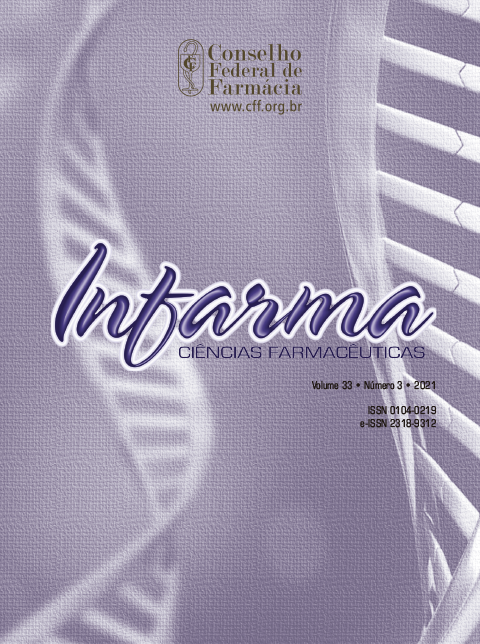EVALUATION OF THE ANTIFUNGAL ACTIVITY OF MELALEUCA ALTERNIFOLIA CHEEL ESSENTIAL OIL ON CLINICAL ISOLATE OF CANDIDA ALBICANS
DOI:
https://doi.org/10.14450/2318-9312.v33.e3.a2021.pp276-282Keywords:
disk diffusion antimicrobial tests, melaleuca, tea tree oil, antifungal agents, Candida albicans, phytotherapy.Abstract
Yeasts of the Candida genus are of great importance due to the high frequency with which they colonize and infect the human host, being the species C. albicans the most common. The search for natural products that present an efficient antifungal action against microorganisms proves to be an alternative for the control of infections. The essential oil of Melaleuca alternifolia Cheel (Myrtaceae) has proven antimicrobial action against bacteria and fungi and has been appointed as an option for the treatment of fungal infections caused by Candida genus. The objective of this work was to verify the antifungal activity, at different concentrations, of the commercial essential oil of M. alternifolia against a strain of clinical isolate of the species C. albicans. For the evaluation of antifungal activity, concentrations of 5 to 100% of the pure essentialoil of M. alternifolia were used in antimicrobial susceptibility tests by disk diffusion method, according to the norm established by the Clinical and Laboratory Standards Institute, with modifications. According to the results obtained, the essential oil showed activity, inhibiting the growth of the microorganism, forming an inhibition halo from the concentration of 25%, with a variation from 3 to 17 mm. Thus, it can be said that the strain of the clinical isolate evaluated showed sensitivity to the essential oil of M. alternifolia, which demonstrates a good antimicrobial potential of the studied oil, arousing great pharmaceutical interest.
Downloads
Published
How to Cite
Issue
Section
License
Authors who publish in this journal agree to the following terms:
- Authors retain the copyright and grant the journal the right of first publication, with the work simultaneously licensed under the Licença Creative Commons Attribution which allows the sharing of work with acknowledgment of authorship and initial publication in this journal.
- Authors are authorized to take additional contracts separately, for non-exclusive distribution of the version of the work published in this journal (e.g. publish in institutional repository or as a book chapter), with acknowledgment of authorship and initial publication in this journal.
- Authors are allowed and encouraged to publish and distribute their work online (e.g. in institutional repositories or on their personal page) at any point before or during the editorial process, as this can generate productive changes as well as increase the impact and Citation of published work (See O Efeito do Acesso Livre ).


